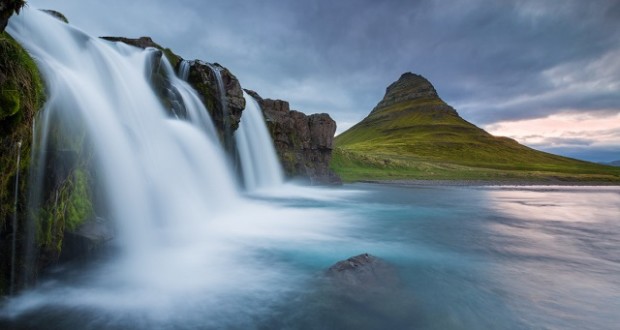With its stunning landscape, volcanoes, geothermal features, waterfalls and glaciers, Iceland is a superb place to visit if geography is your passion. It’s no wonder that Iceland is fast becoming a hot destination with groups of GCSE and A-level students travelling with companies offering tailor-made geography itineraries. Here’s what makes Iceland such a stunning geographical destination for students and tourists, and what you can expect to see:
The Golden Circle
You can spend a whole day touring the ‘Golden Circle’ starting at Thingvellir National Park. The park offers amazing views of the Mid-Atlantic Ridge where the North American and Eurasian
tectonic plates meet, and are being pulled apart at a rate of 2cm per year. The geology at the ridge is spectacular to behold, but there is much more to explore in the park including the 20 metre Oxara Waterfall and the Nikulasargja Gorge, better known as Peningagja (Money Gorge) because it is customary to toss coins into the icy-cold water and make a wish. You can also visit Geysir Hot Springs – a geothermal field where you can see geysers explode and pools of mud bubble. The area became active over 1000 years ago and has more than a dozen hot water blow holes, with the lively Strokkur spouting water 30 metres into the air every few minutes. Although Geysir is less active these days, it lent its name to hot springs all over the world. There is also a Geysir Centre which offers exhibits and informative presentations year round, and you can even assist a chef in boiling eggs outside in a hot spring, then dig up rye bread that has been baking underground for 24 hours. Finish your day with a visit to Gullfoss, known as the Golden Falls, which is a stunning double waterfall that tumbles 34 metres into the Hvítá River.

The South Shore
Another full day can be spent taking a tour of the South Shore. Head across the Laki lava field to the village of Vík, where you can stroll on the black lava beach and along the bird cliffs at Reynisfjara, before taking a trip to the Mýrdalsjökull glacier where the icecap covers an active volcano called Katla. Afterwards, visit the Solheimajokull glacier snout where the glacier melts into a small lake in an ever-changing landscape. An essential part of this day is a drive past the volcano Eyjafjallajökull – the volcano that caused the infamous travel disruptions of 2010! And if that wasn’t enough for one day, finish with Skógafoss and Seljalandfoss waterfalls – Skógafoss is a stunning 60 metres and Seljalandfoss is a high but narrow waterfall which plunges spectacularly over the mountain.

Even with two days filled to the brim, there will still be plenty of geographic beauty to see. The Blue Lagoon geothermal spa is one of the 25 wonders of the world and is essential to visit on a trip to Iceland. This unique geothermal spa is set in the middle of the black lava field with geothermal water originating from 2,000 metres below the surface, where freshwater and seawater combine at extreme temperatures. It is then harnessed via drilling holes at a nearby geothermal power plant, Svartsengi, to create electricity and hot water for nearby communities. Guided tours of the Blue Lagoon are possible and last approximately 40 minutes.

If geothermal energy excites you, then head to the exhibition at Hellisheiði Power Plant and take a state-of-the-art look into the harnessing of geothermal energy in Iceland. The plant is owned by Reykjavik Energy and is a striking example of how geothermal energy is harnessed in a sustainable manner in Iceland and a showcase for the rest of the world. Experienced guides are on-hand to provide informative presentations backed by multimedia shows about sustainable green energy as a global energy source.
There is also the possibility of taking a whale watching tour from Reykjavik. Regular sightings from whale watching boats in Iceland include the infamous killer whale orcas, humpback whales, pilot whales, minke whales, white beaked dolphins and harbour porpoises, not forgetting sperm, fin and blue whales – an opportunity of a lifetime! Summer season is best for whale watching, as the wildlife in the bay is at its highest peak.

If that wasn’t enough to make you pack your bags, remember you could also experience the northern lights whilst you’re there! If you are a student or teacher of geography, travelling with a group can be a cost-effective way of making this once in a lifetime trip viable. You can view more information on tailor made trips to Iceland here.

Don’t forget to pack some sturdy walking boots – you’ll have lots to see!
 Living There
Living There



